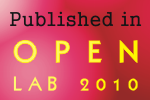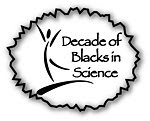 Charles Turner was born in 1867 to newly freed slaves. He was raised and schooled in Cincinnati, Ohio. In fact he earned his undergraduate degree (B.S.) and graduate degree (M.S.) from the University of Cincinnati. In 1907 he earned his Ph.D. in Zoology from the University of Chicago. Moreover he was the first African-American to earn these advanced degrees from each institution.
Charles Turner was born in 1867 to newly freed slaves. He was raised and schooled in Cincinnati, Ohio. In fact he earned his undergraduate degree (B.S.) and graduate degree (M.S.) from the University of Cincinnati. In 1907 he earned his Ph.D. in Zoology from the University of Chicago. Moreover he was the first African-American to earn these advanced degrees from each institution.
Dr. Turner is indeed an academic Hero of mine and a Pioneering Innovator in my field of study, Animal Behavior. In fact, he published papers about insect behavior and navigation (as well as animal physiology) in journals like Animal Behaviour and Science Magazine, and is recorded as the first African-American to do so.
He served as chair of the Science Department and taught Biology at for a time at Clark University (now Clark-Atlanta University). Turner-Tanner Hall is named in his honor. He also inquired about a teaching and research position at Tuskegee Institute. However, it is said that Booker T. Washington was unable to pay the salary of two distinguished science professors, since George Washington Carver was already on faculty. However, he eventually settled in St. Louis, Missouri and taught at Sumner High School, the first high school for African-Americans west of the Mississippi River (in the United States). Though many documents record him as teaching biology at the high school, Sumner was also a Normal School, akin to a Teachers College, and he may have taught college or preparatory science courses, too. Regardless, Dr. Turner maintained scientific productivity, conducting research and writing papers on various subjects.
Planet Science Out There – Black History, Charles Henry Turner
Dr. Turners Doctoral Dissertation, this should give me inspiration as I write mine. If he can do it with a full time job, a family, deal with racial disparities, and no internet, then I can do him proud by finishing mine and I have far fewer life distractions.
A Brief Biography of Charles Henry Turner
Chronology of Charles Henry Turner
Biography of Charles Turner
Bug Watching With Charles Henry Turner (Naturalist's Apprentice Biographies) A book by Michael Elsohn Ross






















3 comments:
This is a really well written post... and you are right, you should be able to do him proud by finishing your dissertation as well! :D
Impressive post on an impressive pioneering researcher with an impressive mustache. Seriously, racial barriers would've quivered in their boots when faced with that magnificent mustache.
I am going to feel a little bit of extra pride today on being a University of Cincinnati alumnus. Here's a clenched fist salute and a toast to the accomplishments of Charles Henry Turner!
Wow! His Dissertations is IMPRESSIVE!!! I know some of the more recent literature on the topic and had no idea that some of these ideas are this old!
Post a Comment